- Home
- slideshows
- miscellaneous
- The 30 biggest population shifts in recent history
The 30 biggest population shifts in recent history
HIGHEST POPULATION GROWTH: 1. United Arab Emirates: 7.08% average growth since 1950

2. Qatar: 6.78% average growth since 1950

One of the reasons Qatar sits at No. 2 is due to the explosion of workers who immigrated mostly to help with building infrastructure for the 2022 FIFA World Cup, which was announced in 2010. The population was less than 700,000 in 2003 and at about 2.5 million in 2016, BBC reported.
3. Western Sahara: 5.39% average growth since 1950

This disputed area in northwest Africa has had high population change due to a large number of people living as displaced refugees. Morocco controls about three-quarters of the territory, and has offered its citizens money, food subsidies, and tax exemptions to move there.
In the 1990s, coastal towns in the Western Sahara became key migration transit points for reaching the Canary Islands, after Spain and Italy tightened visa restrictions and the European Union put pressure on Morocco to control illegal migration, which pushed African migrants to shift their routes.
4. Sint Maarten: 4.79% average growth since 1950

Like its French counterpart, Sint Maarten, the Dutch side of the island of Saint Martin, is known for its beaches, as well as its nightlife, and casinos. A strong tourism industry, including 1.7 million cruise passengers a year, has helped boost population numbers.
5. Kuwait: 4.76% average growth since 1950

Kuwait imports a lot of its workforce, which is one of the reasons why its population has grown as much as it has. The country hosts many overseas contract workers from India, Sri Lanka, Bangladesh, and the Philippines, who are mostly employed in the construction sector and service industry.
6. Jordan: 4.36% average growth since 1950
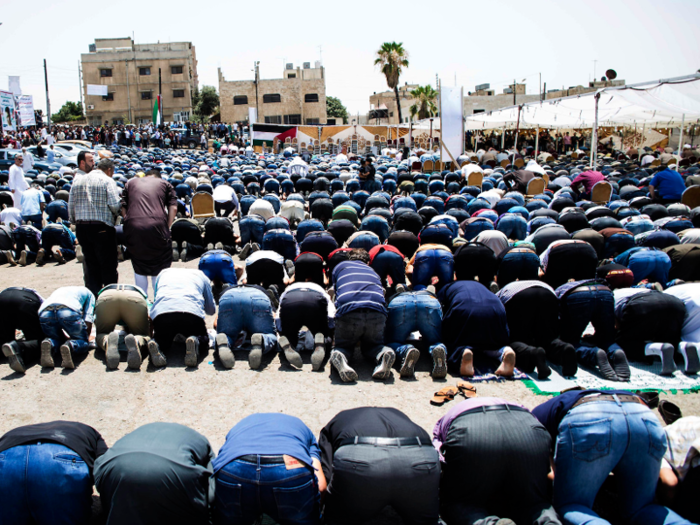
Between 2004 and 2015, Jordan grew by 87%, going from 5.1 million people to 9.5 million — with the majority of the growth coming from outside the country, including 1.26 million Syrians, Jordan Times reported. Jordan's Department of Statistics attributed a lot of the growth to waves of "forced immigration and refugees".
7. Mayotte: 4.13% average growth since 1950

Although Mayotte is one of France's poorest overseas departments, it is still one of the more prosperous regions in the area and has had many immigrants from other Mozambique Channel nations enter it illegally, which has played a role in its growing population.
8. Djibouti: 3.96% average growth since 1950

One of the reasons for the high population change is Djibouti's location. Positioned at the crossroads between Europe, Asia, and Africa, it has increasingly becoming a transit or destination country. Since 2009, Djibouti has become a major point on this migration route for thousands of people.
9. Bahrain: 3.84% average growth since 1950
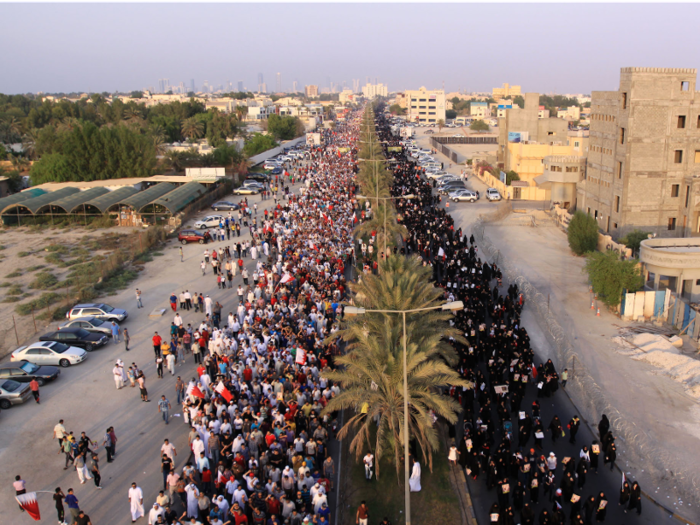
Bahrain has a history of bringing in overseas contract workers, which is a factor in its growing population. The promise of employment is often used to lure workers from India, the Philippines, Bangladesh, Pakistan, and Sri Lanka, according to IOM, the UN's migration organization.
10. Saint-Martin: 3.65% average growth since 1950

Saint-Martin's economy centers around tourism, which gets 85% of its economy from tourism. The French side of the island is also a cruise destination, known for its beaches, shopping, and cuisine. The tourism first industry boomed in the 1980s due to opportunities created by tax reductions.
11. Andorra: 3.61% average growth since 1950

There are a number of reasons why Andorra has had experienced high population growth. Its citizens have one of the highest life expectancies in the world, and it's one of the richest nations due to tourism and its historical status as a tax haven.
But Andorra's population has fallen more recently, due to low birth rates and the government being selective on who becomes a resident.
12. French Guiana: 3.52% average growth since 1950

French Guiana's population has grown in size due to immigrants coming from France, Saint Martin, Suriname, Haiti, and Brazil, and also because of high fertility rates — 44% of the country is younger than 20, while only 1.7% is older than 75.
13. Oman: 3.45% average growth since 1950

One of the reasons Oman's population has grown is the country's push to build large infrastructure projects, which requires a lot of overseas labor. Oman gets the majority of its workers from India and Bangladesh, Gulf News reported.
14. Saudi Arabia: 3.45% average growth since 1950

Saudi Arabia grew exponentially between 1960 and 1990, from a population of 4 million to 16 million, partly because of the country's vast oil reserves. Foreign workers came to the country to help with the workload, and now make up 37% of the population.
15. Cayman Islands: 3.33% average growth since 1950

The Cayman Islands' economy depends on tourism and banking. A lot of its population growth comes from the 100,000 companies that base themselves there, to take advantage of its tax haven status.
LOWEST POPULATION GROWTH: 1. Nuie: -1.51% average growth since 1950

Nuie did not have a massive population to begin with, but since the 1960s, it fell from 5,000 people to 1,600, The Guardian reported. Fifteen times as many Niueans live in New Zealand for work opportunities, and because Niueans are automatically New Zealand citizens.
2. Montserrat: -1.42% average growth since 1950

One of the big issues for Montserrat was when the Soufriere Hills volcano began erupting in 1995, destroying two-thirds of the island, and displacing thousands.
3. Tokelau: -0.21% average growth since 1950

One of the main reasons Tokelau's population is falling is because of emigration to Samoa and New Zealand for work opportunities.
4. Holy See (Vatican City): -0.17% average growth since 1950

As most of the 800 residents who live in Holy See primarily work for the Roman Catholic Church, often as nuns and priests, the birth rate is very low.
5. Bulgaria: -0.06% average growth since 1950

Emigration is the big one for Bulgaria. The country has the lowest average salary in the EU, the lowest minimum wage, the smallest average pension, and 40% are at risk of poverty, the Irish Times reported.
6. Latvia: -0.03% average growth since 1950

Emigration is an issue for Latvia, too, where wages are "a joke" — but it's not the only reason for the country's falling population. The former Soviet state also has a low birth rate and high death rate.
7. Hungary: 0.05% average growth since 1950

One of the reasons Hungary's population is declining is because more people are dying there than being born, Hungary Today reported. Large numbers are also emigrating, with more than 8% of graduates living abroad. Often these graduates are people of childbearing age who are not living in Hungary, leading to every sixth Hungarian child being born outside the country.
8. Lithuania: 0.08% average growth since 1950
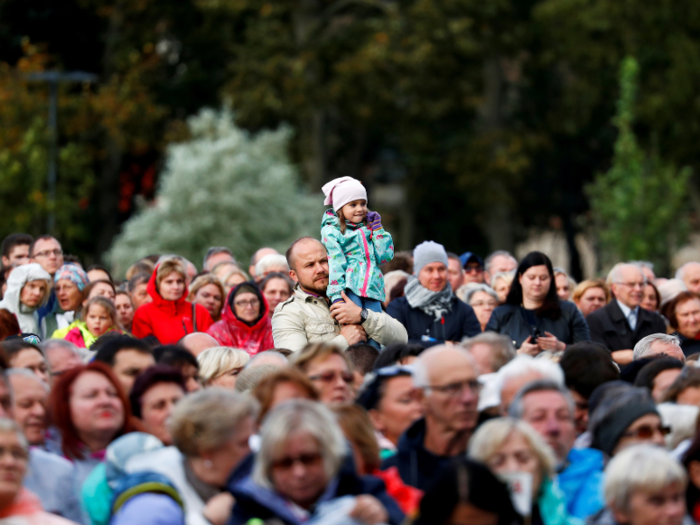
Lithuania's population stagnation is largely due to emigration, particularly to the United Kingdom, and more deaths than births. In 1989, when it declared independence from the Soviet Union, Lithuania had 3.7 million people, but it now has 2.8 million.
9. Croatia: 0.09% average growth since 1950

Croatia's population is falling due to a combination of more deaths than births, as well as emigration to other countries. Although data on emigration is unclear, Total Croatia News reported that the country had lost about 200,000 people between 2015 and 2017. The last natural population increase for Croatia was in 1997.
10. Georgia: 0.18% average growth since 1950
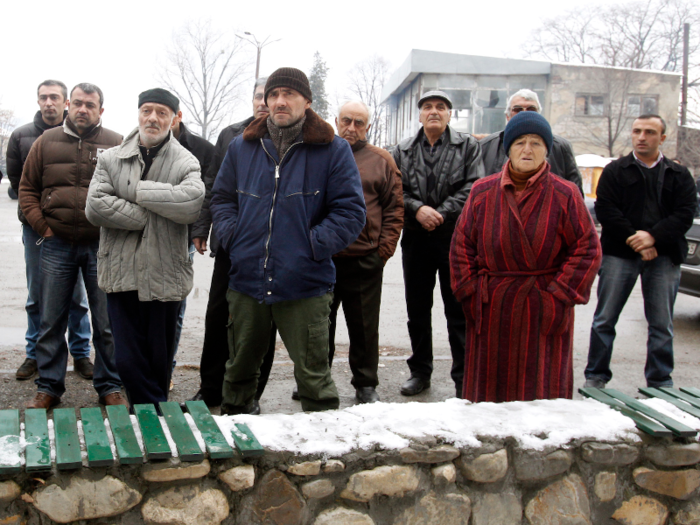
One of the reasons for a falling population is that since the Soviet Union fell, more than 1 million Georgians have emigrated due to lack of opportunities. Another reason is that there is a preference for boys, which has led to sex-selective abortions and fewer females.
11 (tied). Saint Kitts and Nevis: 0.21% average growth since 1950

This two-island nation in the Caribbean Sea has had high levels of emigration, but a strong tourism industry and its position as a tax haven have kept population levels more stable in recent decades.
11 (tied). Saint Helena: 0.21% average growth since 1950

This volcanic tropical island, famous for housing Napoleon Bonaparte in exile, has had little population growth due in part to its isolation. It's more than 1,200 miles from the nearest major landmass. But it does now have "the world's most useless" airport.
13. Cook Islands: 0.22% average growth since 1950

Since 1996, many people left the Cook Islands after the government introduced an economic reform program that led to the loss of public sector jobs, Cook Islands News reported. Another reason was the decline in births, as a result of fewer parents of childbearing ages living in the country.
14. Ukraine: 0.23% average growth since 1950
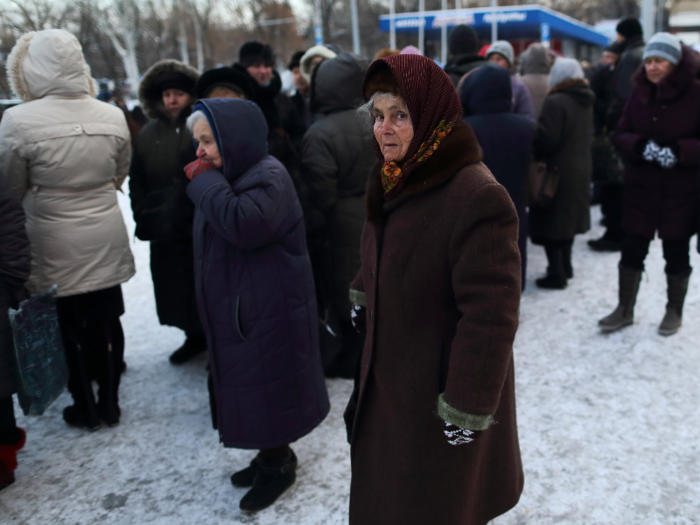
In Ukraine, since the 1990s, a high death rate and low birth rate has led to a declining population. In 2016, a member of Ukraine's Parliament said, "People are dying due to bad living conditions, declining environmental standards, or the war," New Week reported. The country also loses people to emigration.
15. Romania: 0.24% average growth since 1950

Romania is losing a lot of its population to people emigrating to other countries in the European Union due to corruption poverty, according to The Guardian. As many as 3.4 million Romanians have left the country since 2007, when it joined the EU, which equates to 17% of the country's population.
Popular Right Now
Popular Keywords
Advertisement